A previous submission on the IJN Hurana and IJN Tone sparked my interest in digging the IJN Fuso from my stash and doing another layer of work on this iconic Japanese battleship. If one has an awareness of the Imperial Japanese Navy, it is the eye catching pagoda structure of the main superstructure that often comes to mind.
-
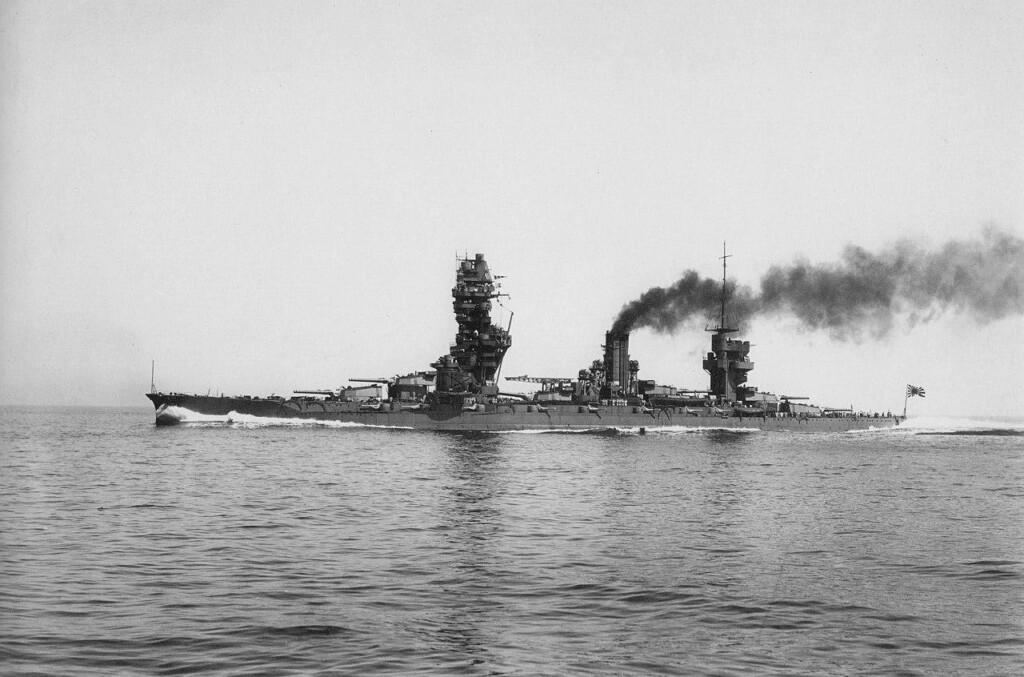
The name Fuso is believed to be a very ancient name for Japan. The IJN Fuso was built as the lead ship of the Fuso Class by the British in 1914-15. In WW1 Japan was allied with Britain, and the Fuso first saw service chasing the Kaiser's ships protecting the new German colonies in the Western Pacific. These dreadnoughts often sported massive masts. When the Fuso underwent major improvements in 1933, the captivating pagoda structure was added to the ship. The apparent precariously balanced pagoda mast was dictated by the arrangements of these former main mast structures. Never the less, the result is a ship that stands out and once seen, can be unforgettable. This next image is not my picture, nor my build! I do hope my build approaches this quality of work.
-
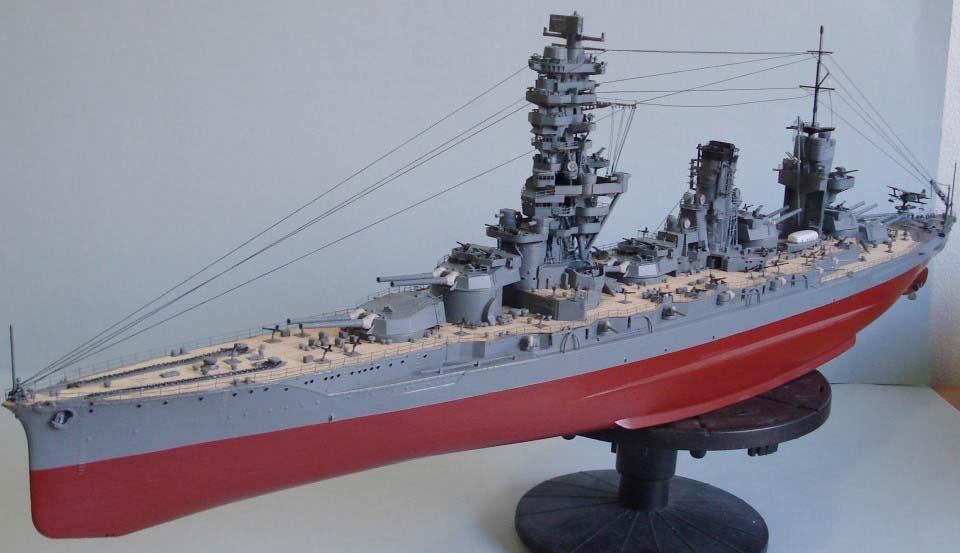
This 1/350 kit was first released by Fujimi in 2010 [600055], and has proven so popular it has gone through seven additional upgrades since then. A major upgrade was done in 2015, with the refinement of parts and many additions, but each release comes with its own kit number, so if you see a kit, research it to see where it sits in the lineup. Each release also comes with a corresponding increase in suggested retail price, SRP, so be careful. I'm glad I purchased my kit when I did.
When I begin a kit I usually complete the hull and main deck, familiarise myself with the build to come, choose my colours and then set it aside. Like a fine scotch, I like to savour the model and the anticipation of build. I also like to think about how I intend the model to end up, as a static display, or in a diorama? This next picture shows indicates that numerous pieces are to go on the deck. The Japanese had a tendency to use every space on a ship.
-
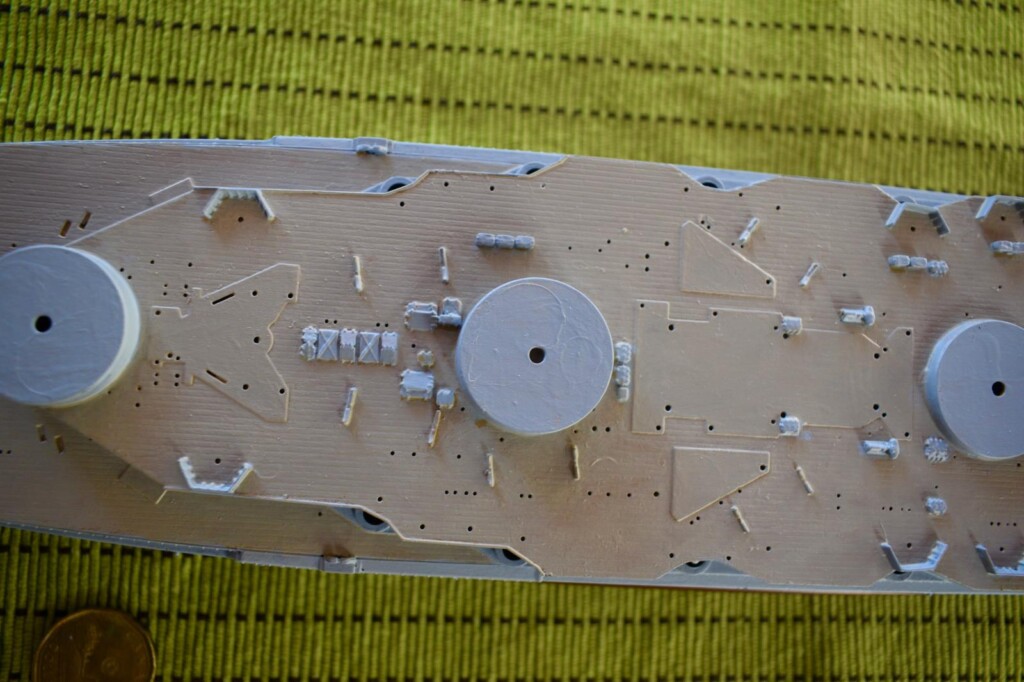
The Fuso had 6 double, 14 inch main gun mounts. The gun mounts topped huge barbettes, that sank deep into the ship, where magazines were attached to the heavy lift machinery required to move the massive shells and powder upwards and into the turrets. Over a 100 men were required to operate each gun. When the 14, 6 inch single, side mounted guns are added, with all the demands each of these guns required, the Fuso became a very complicated and cramped ship. These warships operated for long deployments so the fuel, stores, replacement parts, etc, made for a limited on space. The only area the designers had to make cuts involved the needs of the crew. The bulk of the enlisted personnel were required to find cubbies and niches to live in amongst the ship's equipment. I have not been able to definitively confirm this point, so if someone has a citation on this factoid, I would appreciate it. Officers, on the other hand, enjoyed abundant space and luxuries officers in other navies didn't even dream about. This reflected a culture that sprang into modernity with class cultural baggage. The class system lived in the Imperial Japanese Navy. Severe punishments, high expectations, strict discipline and cruelty were common. When, in WW2, Americans found themselves on a Japanese ship, this cruelty was generously passed along. Not much is known about life on this particular ship. In 1944 the Fuso was sunk in the Battle of Layette Gulf. In the bombardment the fuel of the ship was released and set the sea around the ship on fire. Very few survived the middle of the night sinking, and those that did had to swim to shore, where the Philippine people commonly killed them. There are only 10 known survivors of the Fuso, from the estimated 1,620 personnel aboard.
-
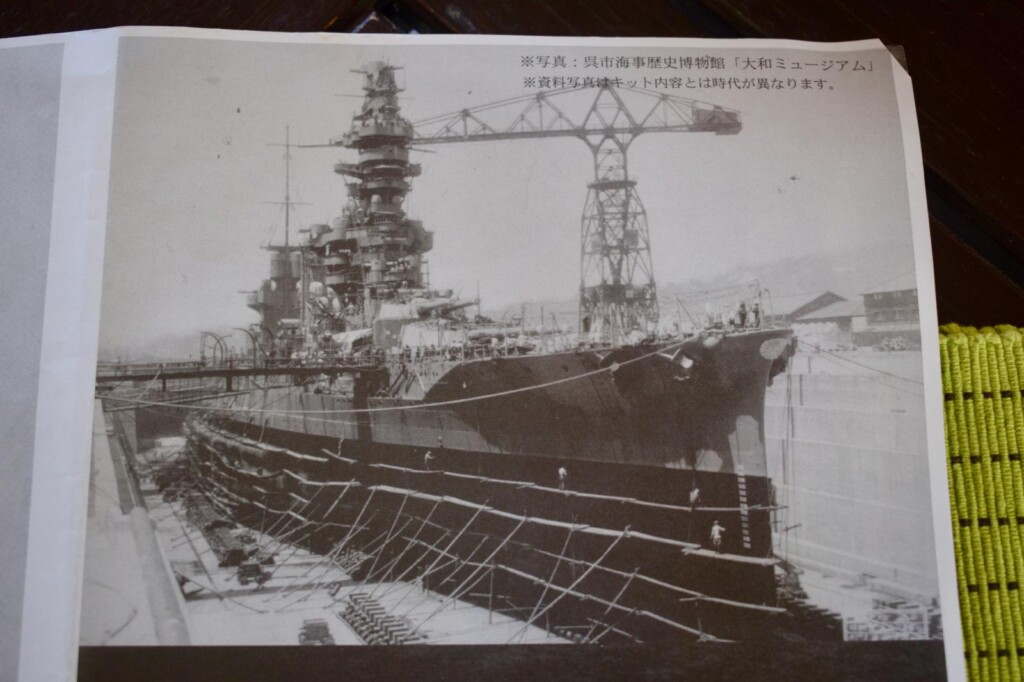
I intend to set my version of the Fuso into a dry dock diorama similar to this picture of the Fuso in Kure, Japan, during a refit. This will be an ambitious undertaking and require much scratch building.
Many companies offer great upgrade products for these models. I prefer Flyhawk because of the consistent quality of the photo etch and my experience with this, a company that stands by its products. In one case, I ordered a Flyhawk set for a model, and received a set for the French Battleship Richelieu instead. I sent an email photo of the package and contents to Flyhawk, and received, by priority mail, the correct set. I was not asked to return the Richelieu set back, and now cannibalise it for scratch builds. On a second occasion a set included one flawed piece, and again, a photo and a note was all that was required to get a prompt correction. Companies that stand by their products are companies I support.
-
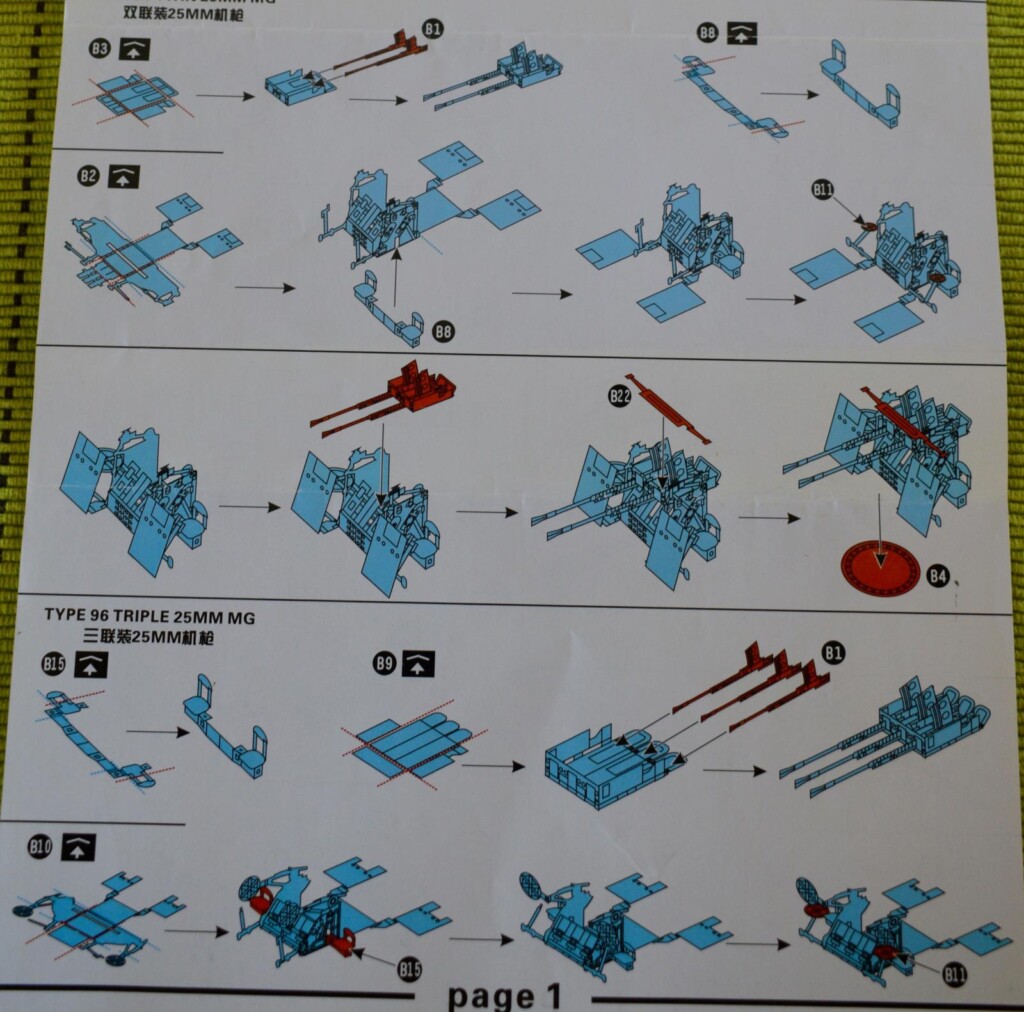
If you have worked with photo etch from such kits as Dragon's, you will know the ambiguities of the directions. Flyhawk is i***t proof, as I well know, because if I see two options for a piece, I inevitably go the wrong way. Flyhawk is my kind of company, making instructions clear and simple. The colour coded fold directions are a real life- model- savour.
Here the stern PE float plane deck sits where it will be attached. The PE makes a huge difference to a model, even one as fine as Fujimi's. Matching up PE with a model's kit directions can be a challenge. Flyhawk helps by identifying the original piece and the PE pieces and comes with many helpful pictures. Again, fools like me appreciate all the assistance to see we get a satisfactory outcome. If something goes wrong, there's only one builder to blame!
The gun metal barrels are a nice addition. Once, they really stood out, but now quality kits produce plastic barrels, that once installed, are getting harder to distinguish from the metal.
I make simple folders to protect and identify the PE sprues. Washing these pieces, very gently, is necessary as residue can prevent paint bonds. I use a primer on larger pieces. I have learned it is easy to photocopy the PE directions and insert them into the model directions, or just keep them as an easier reference, then constantly flipping the Flyhawk original directions over and over.
I have never had much success painting personnel and a poorly painted 1/350 person stands out. These sets are wonderful and several companies provide them.
So now I'll see what I can do to move my Fuso along to another level. I wish you all satisfying modelling, whatever be your arena of interest.